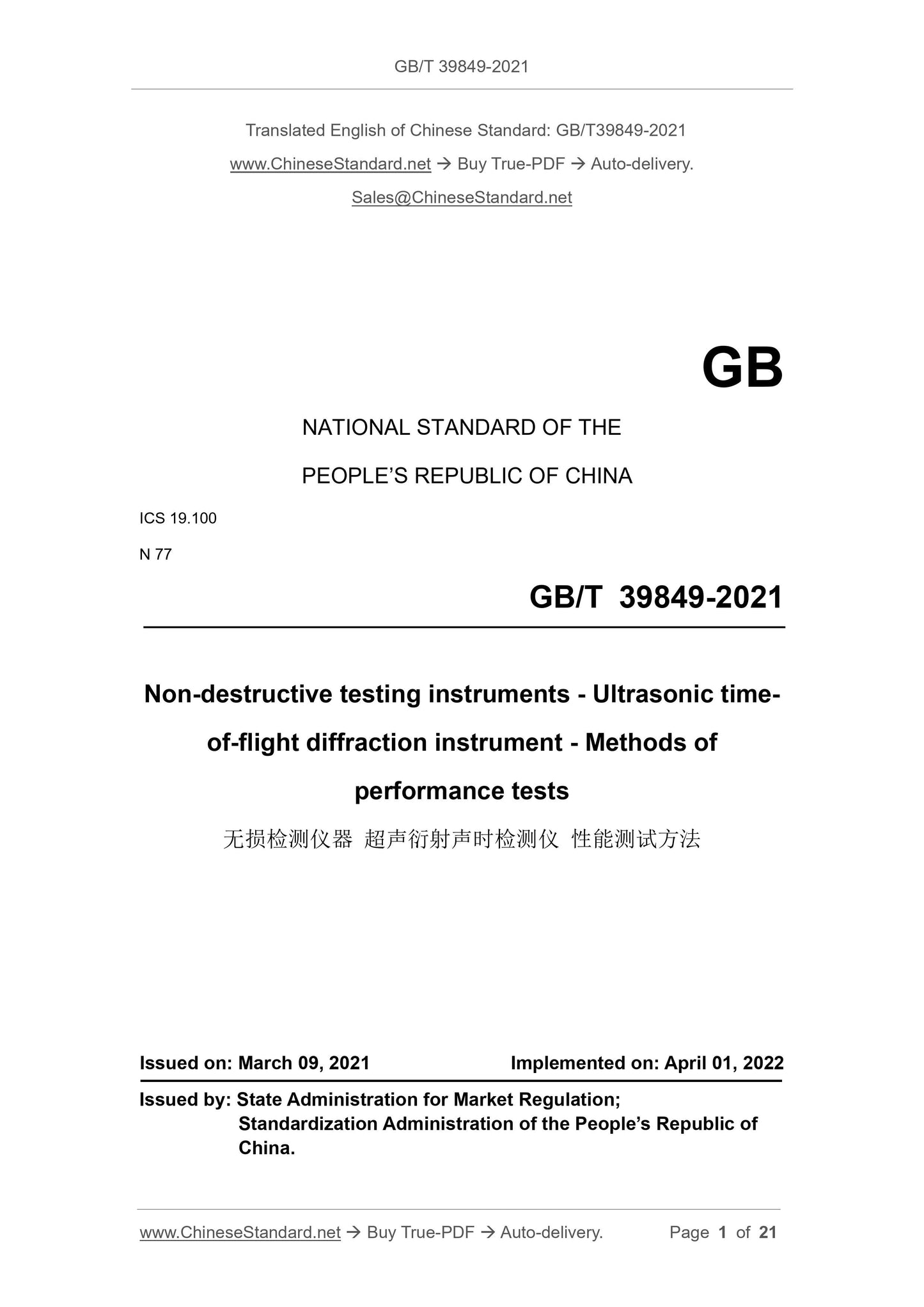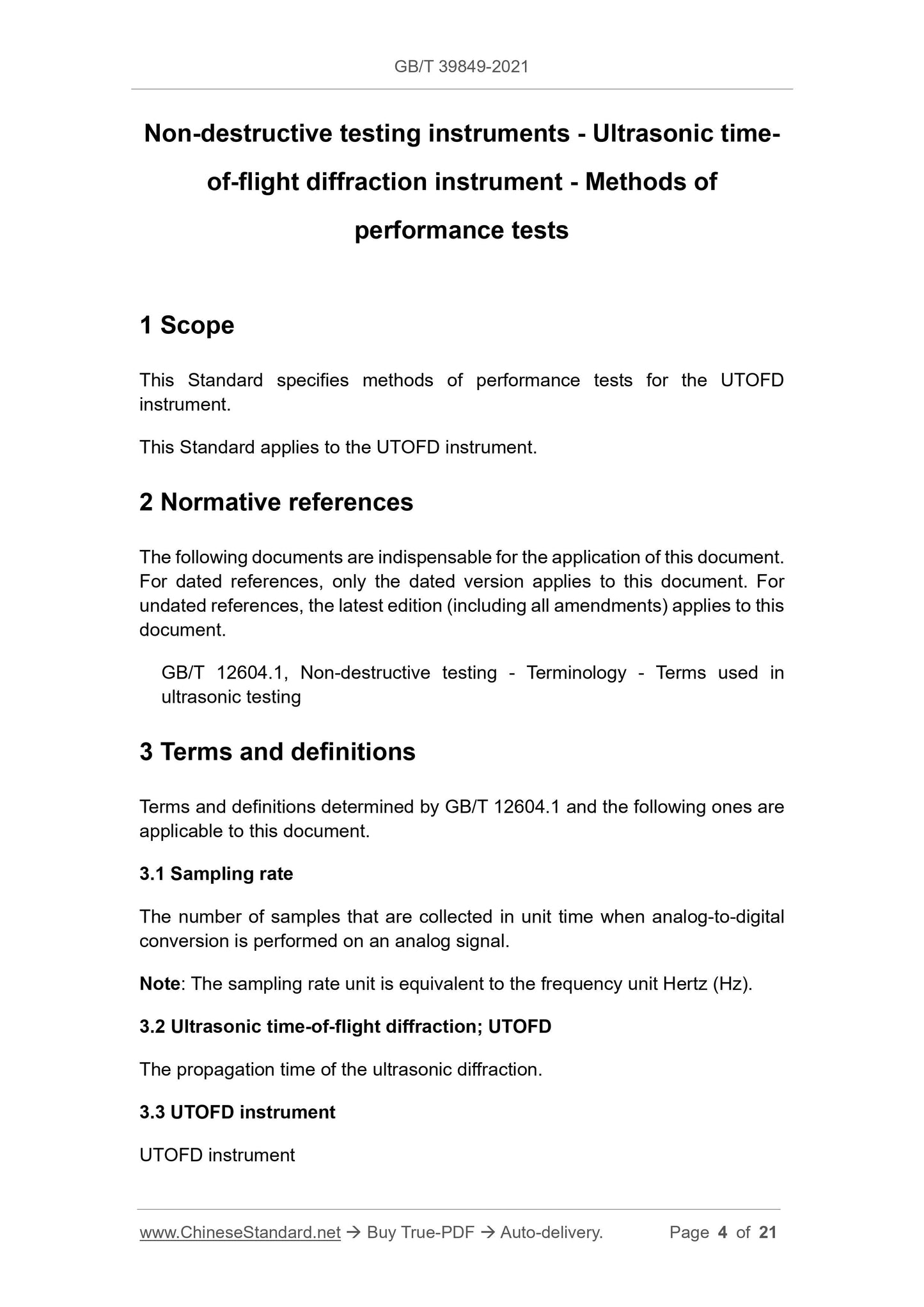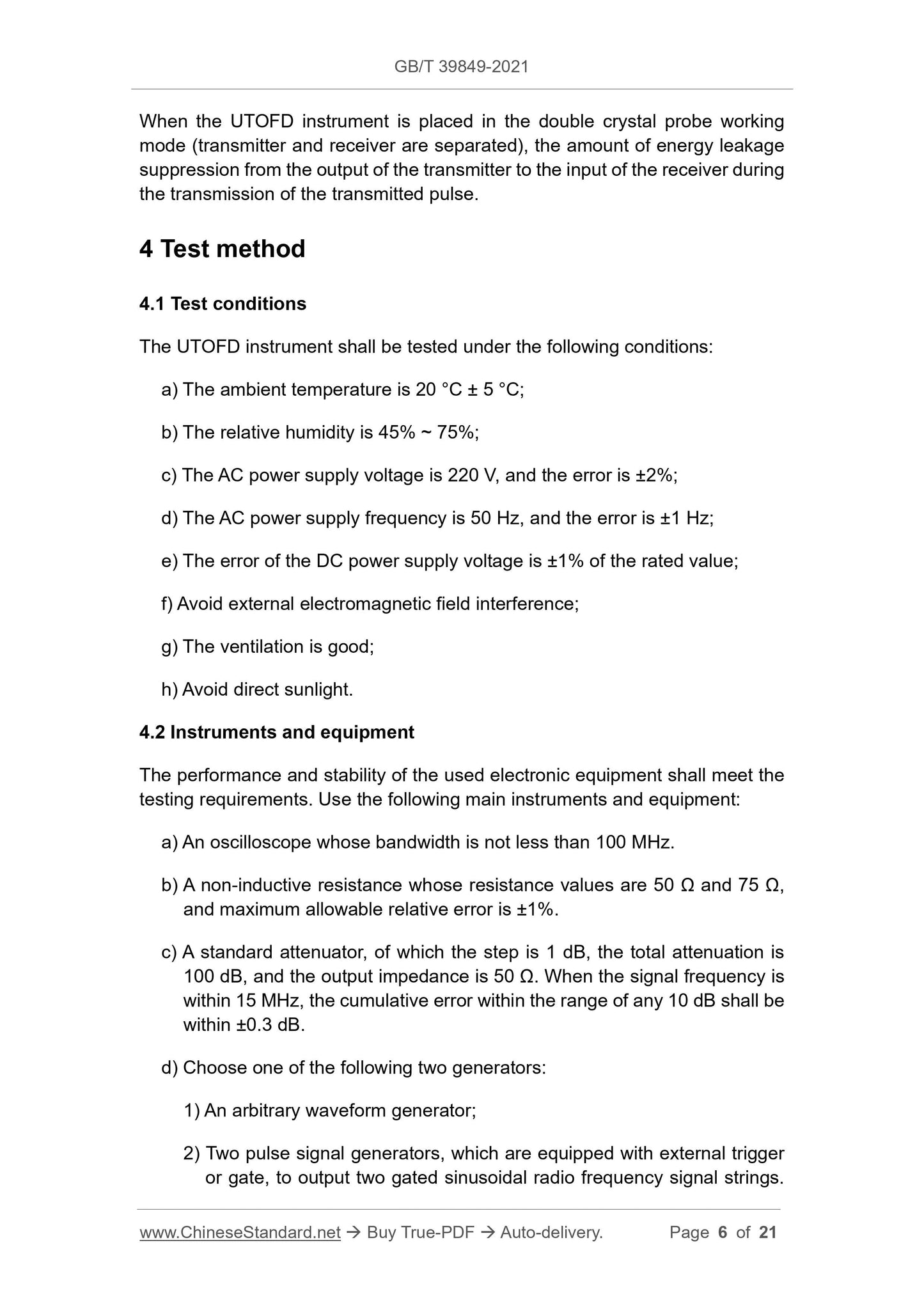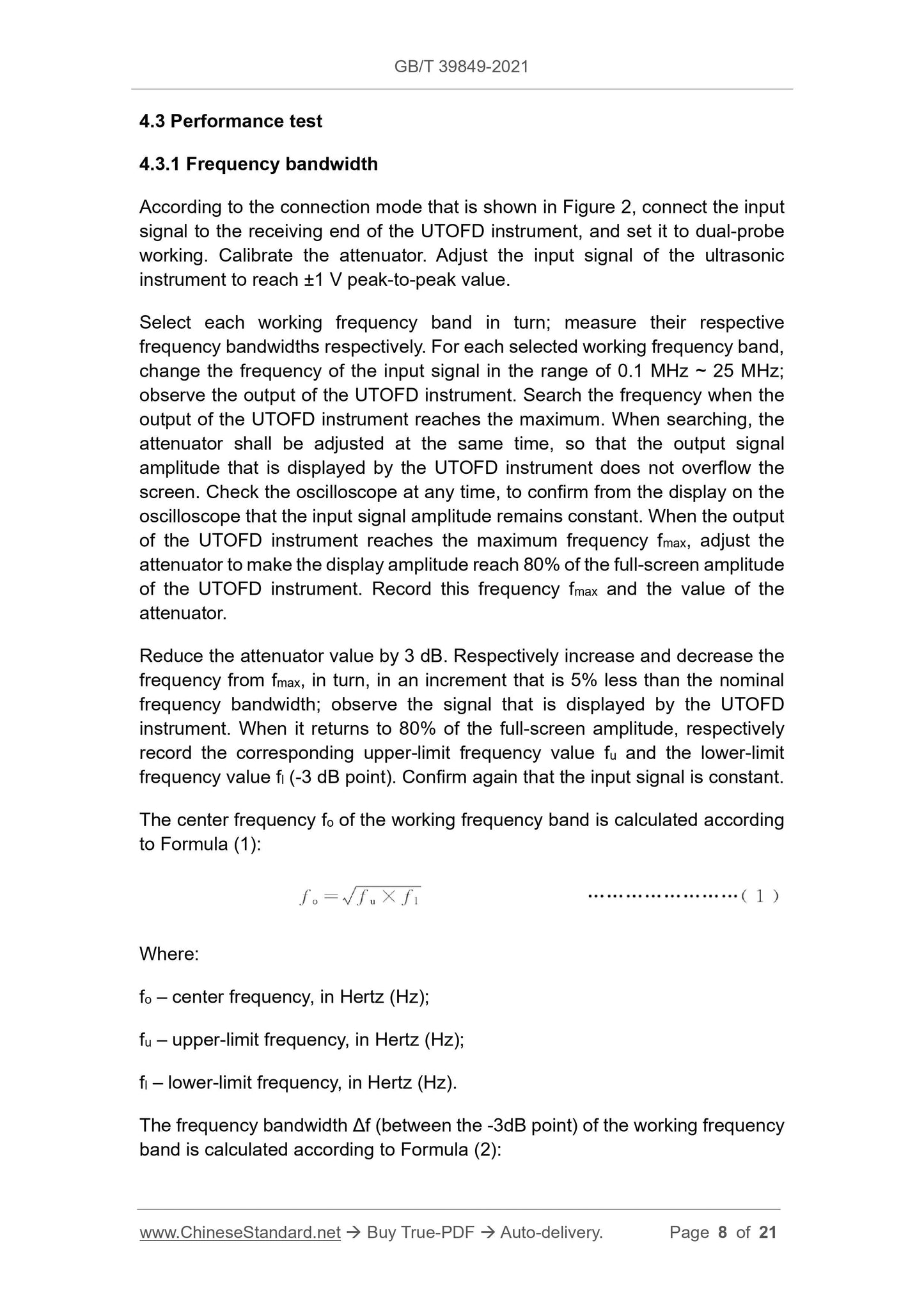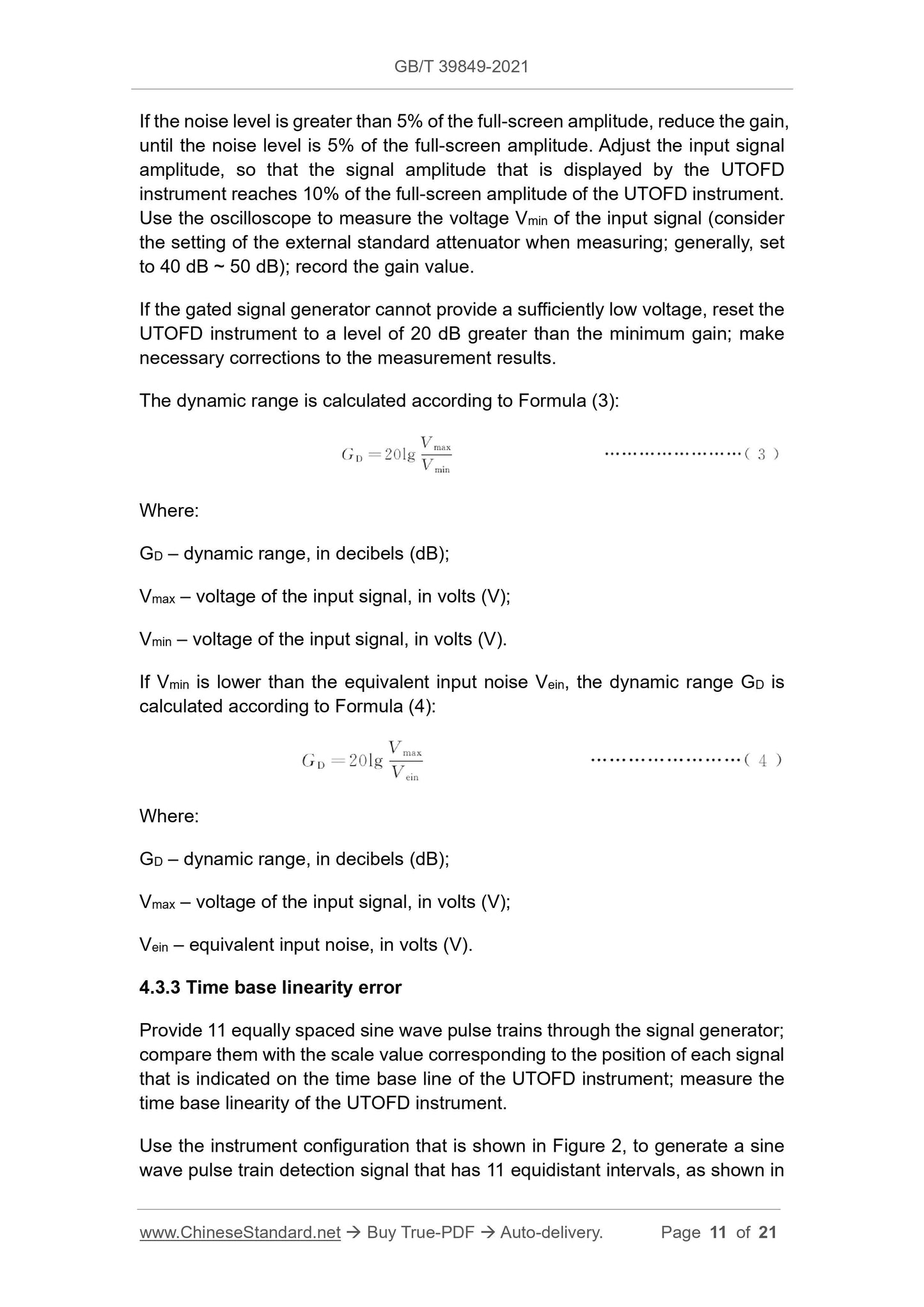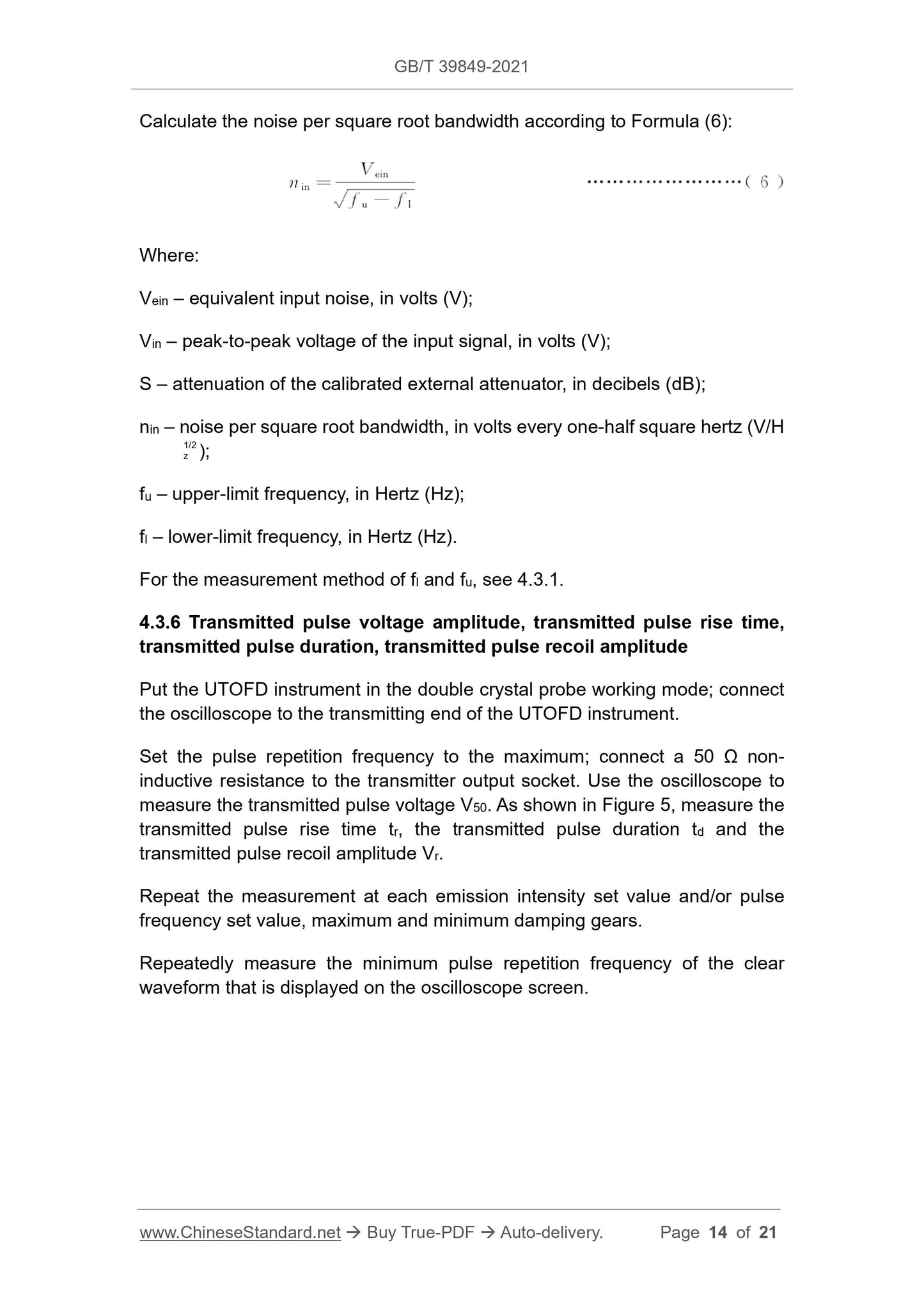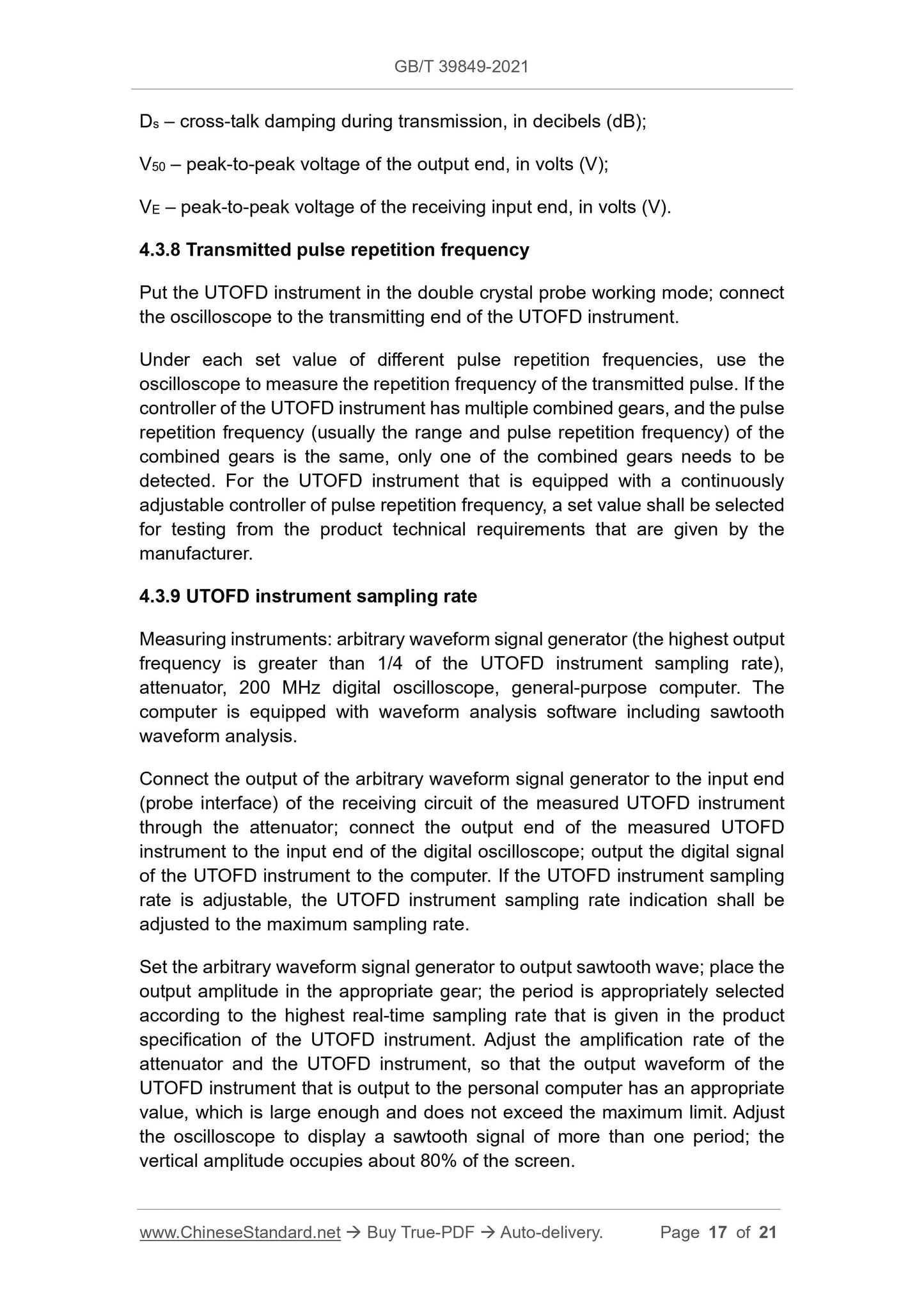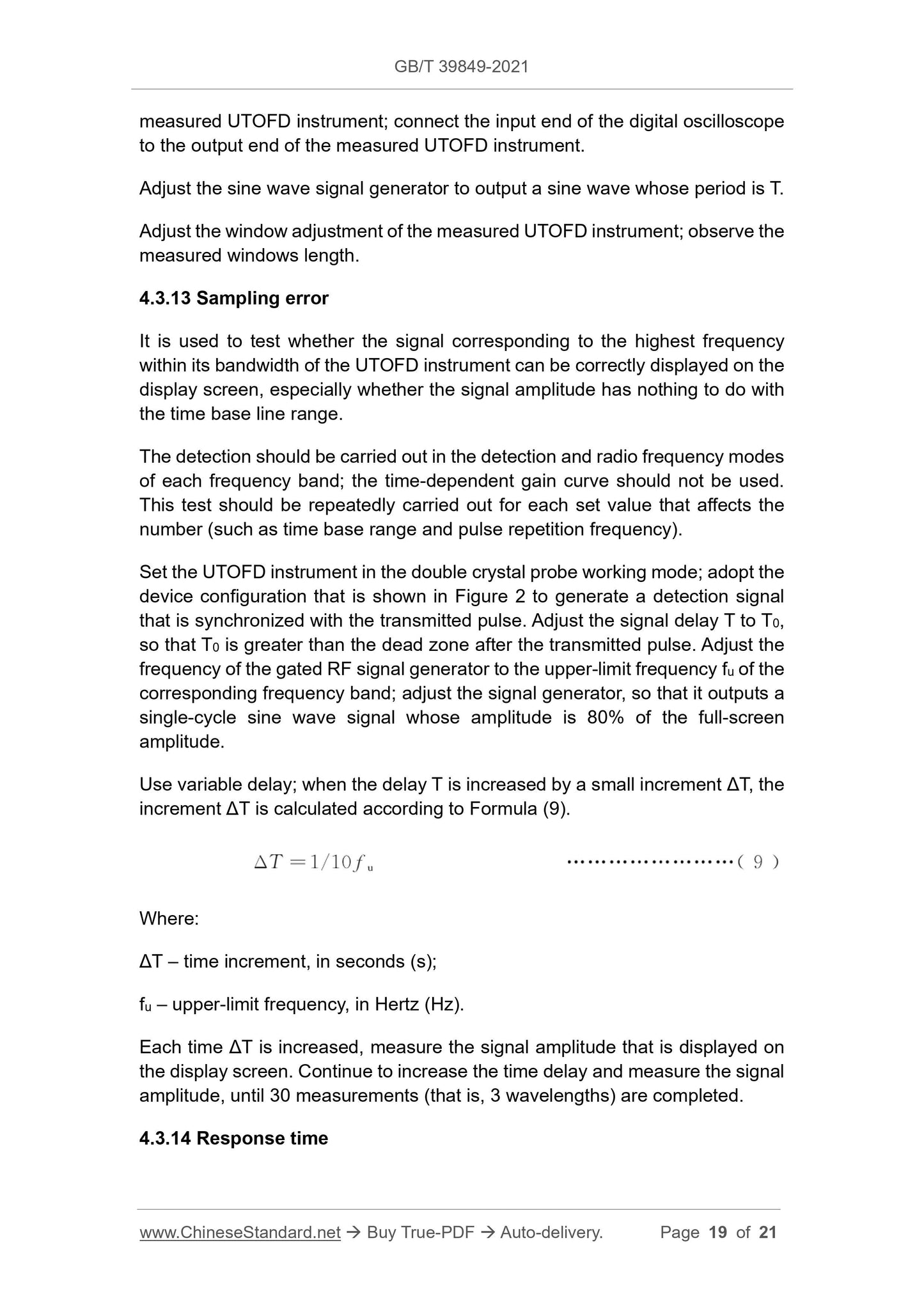1
/
of
9
www.ChineseStandard.us -- Field Test Asia Pte. Ltd.
GB/T 39849-2021 English PDF (GB/T39849-2021)
GB/T 39849-2021 English PDF (GB/T39849-2021)
Regular price
$145.00
Regular price
Sale price
$145.00
Unit price
/
per
Shipping calculated at checkout.
Couldn't load pickup availability
GB/T 39849-2021: Non-destructive testing instruments - Ultrasonic time-of-flight diffraction instrument - Methods of performance tests
Delivery: 9 seconds. Download (and Email) true-PDF + Invoice.Get Quotation: Click GB/T 39849-2021 (Self-service in 1-minute)
Newer / historical versions: GB/T 39849-2021
Preview True-PDF
Scope
This Standard specifies methods of performance tests for the UTOFDinstrument.
This Standard applies to the UTOFD instrument.
Basic Data
| Standard ID | GB/T 39849-2021 (GB/T39849-2021) |
| Description (Translated English) | Non-destructive testing instruments - Ultrasonic time-of-flight diffraction instrument - Methods of performance tests |
| Sector / Industry | National Standard (Recommended) |
| Classification of Chinese Standard | N77 |
| Word Count Estimation | 14,161 |
| Issuing agency(ies) | State Administration for Market Regulation, China National Standardization Administration |
Share
